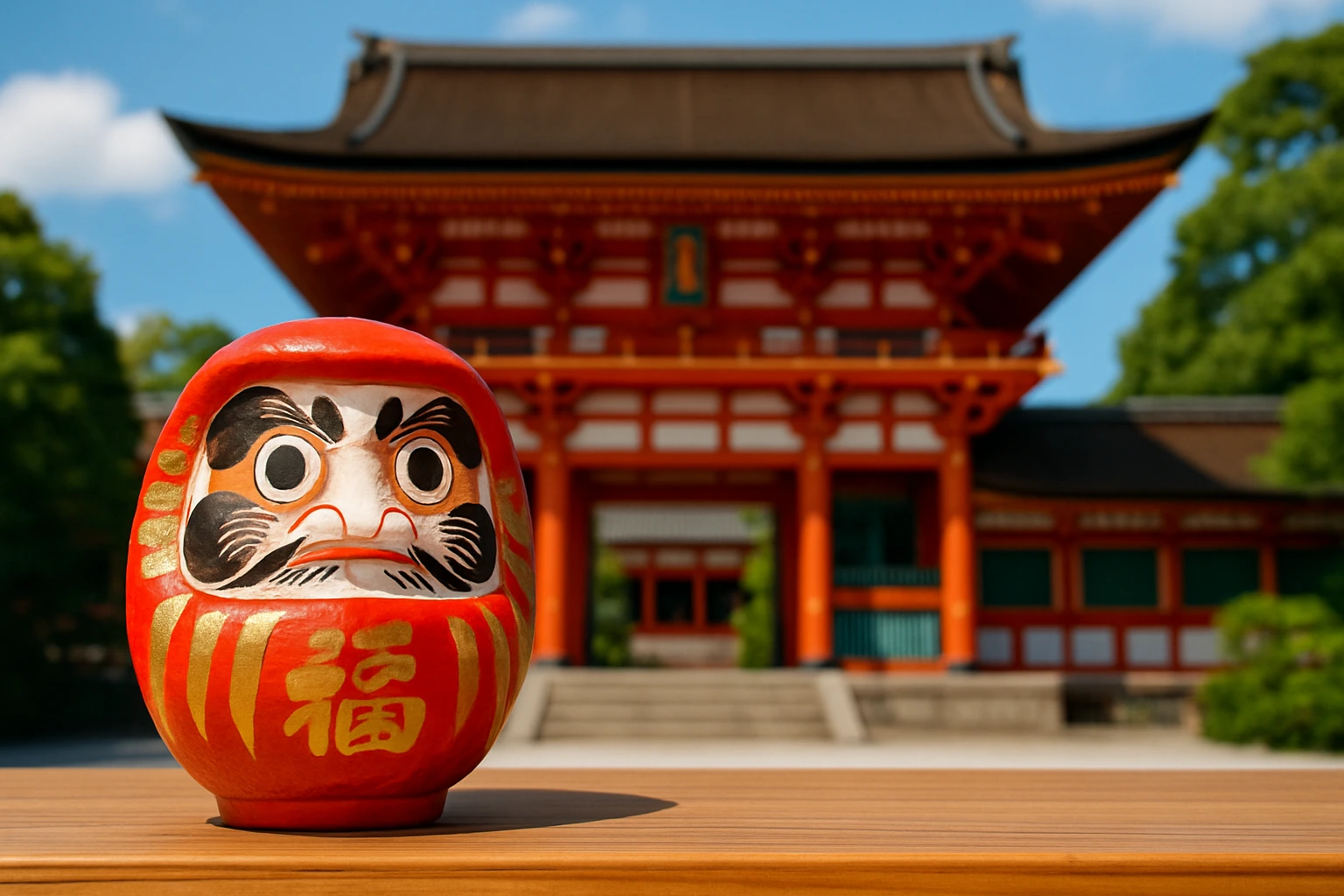Introduction: Daruma Doll Japan
The Daruma Doll is a legendary Japanese talisman embodying perseverance, good fortune, and the power of personal ambition. Modeled after Bodhidharma, the Indian Buddhist monk credited with founding the Zen tradition, the Daruma Doll’s bright appearance and resilient design make it much more than a folk toy—it is a spiritual symbol, a tool for goal-setting, and a cultural bridge between India and Japan.
Summary
Daruma Doll: History and Origins
Bodhidharma, believed to have lived in the 5th–6th century CE, was famous for his intense meditative discipline: legend says he meditated for nine years facing a wall in China, inspiring stories that his legs and arms atrophied and fell off. This is reflected in the Daruma Doll’s limbless, rounded shape. The name “Daruma” is the Japanese adaptation of “Dharma,” rooted in Sanskrit meaning universal law or duty, further tying Indian philosophical influences to Japanese customs. The doll’s rise in Japan is also linked to the Takasaki region, where the Shorinzan Daruma-ji Temple became a center for crafting and blessing Daruma Dolls as New Year’s charms.
Design and Symbolism
Daruma Dolls are made from papier-mâché and feature a weighted, round base so they always return upright after being pushed—representing resilience and the phrase “fall seven times, rise eight”. Most are bright red, symbolizing good luck and protection, but come in multiple colors each with unique meanings such as white for purity and gold for wealth. A core ritual is the coloring of the doll’s eyes: the left eye is painted when a goal is set, and the right upon achievement, creating a visual, motivational reminder for commitment and success.
Modern Practices and Cultural Role
Daruma Dolls are especially popular before exams, business launches, and milestone events, gifted as tokens of encouragement and luck. Every year, Takasaki hosts a Daruma Doll Festival where people purchase new dolls, return old ones in gratitude, and set new intentions. The dolls have grown from spiritual artifacts to powerful symbols in personal development, politics, and commerce, often used by temples and families alike.
India-Japan Spiritual Link
The Daruma Doll’s legacy uniquely demonstrates the interweaving of Indian Buddhist philosophy and Japanese Zen traditions. Both the design and rituals echo Bodhidharma’s discipline and spiritual teachings, highlighting the shared values of resilience, perseverance, and renewal at the core of both cultures.
FAQ
Q1: What is the Daruma Doll’s origin?
A: The Daruma Doll is inspired by Bodhidharma, a 5th-century Indian monk and founder of Zen Buddhism, arriving in Japan via China.
Q2: Why does the Daruma Doll have blank eyes?
A: Owners paint in the left eye when setting a goal and the right eye when the goal is achieved, symbolizing perseverance and focus.
Q3: What do different colors mean?
A: Red is for luck; other colors stand for purity (white), wealth (gold), protection (black), and health (green).
Q4: Where are Daruma Dolls traditionally made?
A: Takasaki, Gunma Prefecture, Japan, is famous for its Daruma-ji Temple and the annual Daruma Doll festival.
Q5: How does the Daruma Doll connect India with Japan?
A: Its origin in Bodhidharma’s philosophy and zen teachings represents a deep spiritual bridge between the two countries.
MCQs
1. The Daruma Doll is modeled after which Buddhist monk?
a) Dogen
b) Bodhidharma
c) Nagarjuna
d) Kukai
Answer: b) Bodhidharma
2. What does the Daruma Doll’s upright design symbolize?
a) Wisdom
b) Wealth
c) Resilience
d) Peace
Answer: c) Resilience
3. The ritual of painting the doll’s eyes represents:
a) Friendship
b) Perseverance and goal-setting
c) Respect for elders
d) Seasonal change
Answer: b) Perseverance and goal-setting
4. Which Japanese temple is central to Daruma Doll tradition?
a) Senso-ji
b) Daruma-ji
c) Todai-ji
d) Kiyomizu-dera
Answer: b) Daruma-ji
Disclaimer:
This article and accompanying visual content are created for educational and informational purposes only. While every effort has been made to ensure accuracy, interpretations of cultural symbols and history may vary. The content is original and respects intellectual property rights.

